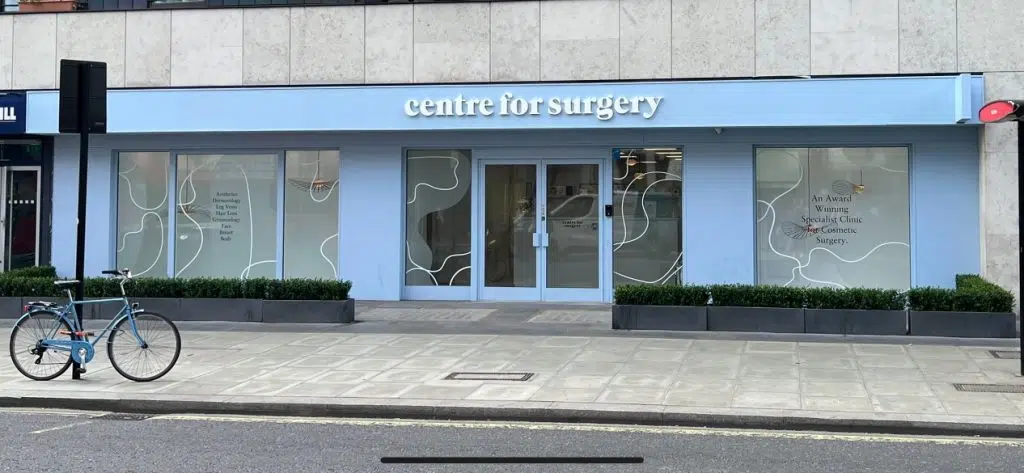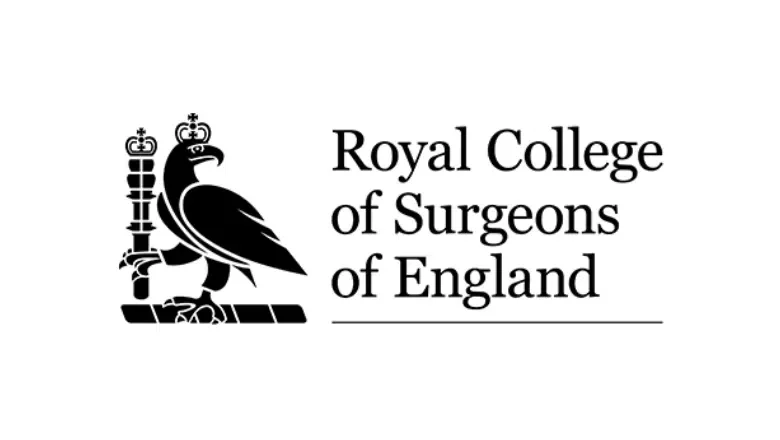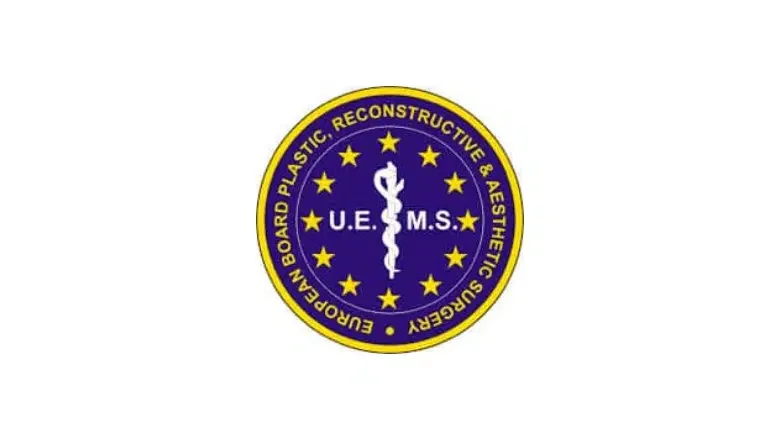Breast Implant Revision in London
Breast implant revision surgery is an option if you are unhappy with your breast implants.
Breast implant revision surgery involves either implant removal and/or replacement with the latest generation silicone breast implants in a newly created surgical breast pocket. The procedure can be carried out to change old implants for larger or smaller implants, or it can be performed to address complications that have developed from primary breast augmentation.
RELATED: What is breast revision surgery?
Breast implant revision aims to produce an aesthetically pleasing look with a more youthful breast appearance. Most types of revision breast implant surgery involve a greater degree of technical complexity than the first breast augmentation procedure. They should only be carried out by suitably skilled plastic surgeons in a dedicated unit treating high volumes of breast implant revision cases.
RELATED: Common Questions about Breast Implants
We offer the full range of breast implant revision procedures, including breast implant removal, breast implant replacement, breast implant removal combined with a breast lift and fat transfer breast augmentation. Breast implant surgery is the most popular cosmetic surgery procedure performed in the UK. The first majority of women who have breast implants are pleased with the results of their procedure, although a small number of patients may not achieve the results they are looking for and may require breast implant revision.
RELATED: What are common breast implant problems?
Many people enjoy many years of having breast implants with no problems, although, after a certain point, breast implant revision may be required. Other women may develop complications shortly after their procedure has taken place, or they may be dissatisfied with the results and require corrective surgery. Most reputable breast implant manufacturers offer a lifetime warranty, although it is highly likely that implants will eventually develop problems, especially after ten years. Breast implant revision surgery is required for women who have breast implants between 10 and 20 years old. In many cases, the need for breast implant revision surgery could have been minimised by careful preoperative planning and choosing an expert breast specialist to perform your primary breast augmentation.
What is Breast Implant Revision Surgery?
Breast implant revision surgery is a customised surgical procedure tailored to address the unique needs and requirements of each patient. This form of surgery caters to a range of needs, from rectifying issues stemming from previous breast surgeries to meeting aesthetic goals such as achieving a more voluminous or lifted bust, enhancing cleavage, or altering the size or type of breast implants. Additionally, some individuals seek this surgery to improve the appearance of scars from their initial breast surgery, aiming for a more refined look at the site of the original incision.
RELATED: 3 Breast Implant Safety Considerations To Know About
The necessity for revision surgery often arises due to complications encountered with the initial breast augmentation. In scenarios where a patient faces capsular contracture—a condition in which the scar tissue around the implant tightens—surgical intervention may involve removing the scar tissue and possibly replacing the implant to ensure comfort and maintain the desired aesthetic. Similarly, should a breast implant rupture, prompt replacement is essential to preserve the breast’s appearance and health.
Contrary to widespread belief, breast implants do not have a predetermined lifespan, necessitating routine replacement every decade or so. Manufacturers of these medical devices typically offer a lifetime warranty, underscoring their durability and long-term reliability. The majority of individuals who undergo breast augmentation remain satisfied with their results indefinitely, with no need for further revision, assuming no complications arise.
Nevertheless, personal preferences evolve, and some may opt for an update, such as switching from saline to cohesive gel implants, driven by a desire for a different feel or look. This choice underscores the highly individual nature of cosmetic surgery, where personal preference and the pursuit of self-defined beauty standards guide decisions.
Common Reasons for Breast Revision Surgery
Changes in the size of the breast implant necessitating breast implant replacement
In some cases, many women wish they had chosen larger implants for their first breast implant surgery. Our surgeons commonly hear this from women who have already had a breast augmentation and now prefer to go bigger. Less commonly, women may be surprised at how large their breasts look and wish to have smaller implants. Although breast implant replacement can help change breast implant size or shape, it is not as technically straightforward as primary breast surgery. If you want bigger breast implants, we recommend reflecting on the aspects of your appearance that you would like to alter instead of choosing larger-sized implants. Many women often like to have more cleavage, and choosing implants with a higher projection, also known as high-profile implants, may help to give the impression of enhanced cleavage and upper pole fullness without altering the dimensions of the implant. Some women often prefer to have increased lateral fullness of their breasts, and changing to implants with a broader base may help to give women more lateral fullness.
RELATED: Does breast augmentation enhance cleavage?
What constitutes the ideal aesthetic appearance of the breasts often evolves, and having bigger breasts isn’t always the aesthetic ideal. For women who would like to have significantly smaller-sized implants, a breast lift or mastopexy may also need to be performed in the same procedure to address any sagging skin that has developed as a result of stretching out of the skin envelope by having large implants. If you have only had breast implants for less than a few years, then the skin’s elasticity may allow the breasts to undergo a degree of shrinkage around the new, smaller-sized implants. The extent of breast skin retraction around the smaller-sized implants is determined by overall skin quality. Individuals who have experienced significant fluctuations in weight or have undergone breastfeeding may be more likely to have poorer skin quality and therefore require a breast lift during the same procedure to tighten the skin.
Capsular contracture
Capsular contracture is the most common complication after breast augmentation surgery with implants. The condition can develop as soon as three months after the procedure or as late as 20 years later. Based on current medical opinion, it is impossible to predict who will develop capsular contracture or when it will occur. Women who develop capsular contracture often notice their breasts feel hard, become deformed in appearance or may cause significant discomfort.
RELATED: Do I Have Capsular Contracture and Can it be Treated?
More severe grades of contracture often require revision breast surgery. Surgery for capsular contracture most commonly involves the removal of the existing implant and the surrounding affected capsule, also known as an en bloc capsulectomy, followed by replacement with a new implant. In some instances, your surgeon may create a new pocket for the breast implants and leave the existing capsule behind. The new implant is placed in a brand-new pocket, resulting in a speedy recovery. For women who have previously had a subglandular (over-the-muscle) breast augmentation, the risk of developing capsular contracture can be minimised by creating a new pocket beneath the pectoralis muscle (dual plane).
RELATED: Breast implant placements – over or under the muscle?
Some women may have had several breast implant revision procedures to treat capsular contracture. The thickness of the soft tissues begins to diminish with repeated surgical procedures and may increase the risk of the implant or its edges being visible. The risk of implant rippling is also higher. The best option is to carry out fat transfer to the breast while performing breast implant revision in the same procedure. This is also known as hybrid breast augmentation.
Despite successful treatment of capsular contracture, the condition can still recur despite following all the best guidance for prevention. Patients who develop severe grades of capsular contracture or have had multiple breast revision surgeries may be better suited to having polyurethane breast implants, as these have been shown to reduce the risk of repeated capsular contraction. Patients who smoke should be given help to stop smoking, as the prevalence of capsular contracture is doubled in smokers versus non-smokers.
Breast implant rupture
Revision breast implant surgery will be required if the outer shell of a breast implant loses its integrity, which may lead to deflation for saline implants or deformation of silicone implants. The rupture of saline implants is easy to recognise, with an obvious reduction in breast size similar to a deflated balloon. Silicone implant rupture can be more difficult to diagnose. Patients may experience pain or discomfort in the affected breast or notice a deformed appearance due to a ruptured implant.
MRI is the most appropriate diagnostic imaging investigation to diagnose silicone implant rupture. An MRI scan can assess the integrity of the outer implant shell and detect silicone that may have migrated into the surrounding tissues. An ultrasound scan is a suitable alternative for patients who are not keen on having an MRI scan. However, diagnosing breast implant rupture on ultrasound is highly operator-dependent and requires a skilled practitioner. Modern breast implants containing silicone have a very low risk of rupture of less than one per cent. Medical-grade silicone in the latest generation implants has a highly cohesive nature. This means that if a rupture occurs, the silicone does not leak out like a runny liquid; instead, it remains within the implant shell or the surrounding capsule. The breast capsule surrounding an implant is composed of scar tissue, representing the body’s normal reaction to a foreign body, including breast implants.
Breast implants have a finite lifespan, which means that as breast implants age, they are more likely to develop breaches in the integrity of the outer shell, including minor cracks or larger tears. These will require revision breast implant surgery at the earliest opportunity to minimise the risk of complications occurring.
Breast implant malposition
The position of breast implants may change if the breast pocket is excessively large in a particular direction. Breast implants may migrate downwards or upwards. They can also migrate outwards towards the armpit or inwards, known as symmastia. The best way to prevent or minimise these issues is to ensure meticulous surgical technique is used throughout the procedure. Our expert breast specialists are experienced in creating breast pockets with precise dimensions to accommodate the size of your chosen implant. This helps to prevent implant displacement and possible malposition. Patients who decide on excessively large implants have a higher risk of developing implant displacement. Implants that are 500cc or larger are more likely to migrate downwards or outwards due to their heavier nature. Implants that are positioned over the muscle, also known as the subglandular approach, have a greater risk of downward displacement. Implants placed beneath the muscle are more likely to displace outwards.
RELATED: Breast Implant Flipped or Rotated?
Excessively large breast gap or wide cleavage
Breast implants can displace outwards towards the armpit, and this can result in a reduction in the appearance of breast cleavage. When people lie flat, it is normal for the breasts to move laterally. When people are standing or sitting, breast implants should not displace laterally. A huge breast implant pocket from overzealous dissection or natural expansion with time can result in the implants migrating laterally to the sides, and is especially noticeable when lying down. Some women may have chest wall deformities, such as pectus carinatum. This condition creates an excessive curvature of the chest wall and increases the likelihood of lateral displacement of breast implants despite an appropriately sized breast pocket.
RELATED: Why Are My Boobs Far Apart?
Symmastia or ‘uniboob’
When breast implants move medially or towards the sternum, this condition is known as symmastia, also referred to as a ‘uniboob’. Symmastia has a greater risk of occurring with subglandular placement of implants. It can, however, also occur from the excessive surgical release of the pectoralis muscle fibres in its inner aspect as part of the dual plane approach, combined with the insertion of an excessively wide breast implant.
Symmastia most commonly relates to an excessively large breast pocket in women who may have a pre-existing deformity of the chest wall, such as pectus excavatum. This increases the likelihood of breast implants migrating in an inward direction. Surgical treatment for symmastia is complex and challenging. Revision breast surgery involves adjusting the size of the pockets using suture reconstruction and changing to a smaller-sized implant with a slimmer base.
Double bubble deformity
A double bubble deformity is classified as a static deformity, as it is visible when the breasts are at rest. In this condition, the breast implant is positioned below the regular lower breast fold, resulting in the formation of an extra crease at a level lower than the breast implant. This can look unsightly. Causes of a double bubble deformity include excessively large implants, short nipple to IMF distance, capsular contracture, tuberous breast deformity or a well-defined inframammary fold. Surgery to correct a double bubble deformity is considered a technically challenging procedure. The exact surgical technique used will depend on the extent of surgical correction required.
Animation deformity
Animation deformity results in implants migrating upwards and outwards with muscle contraction in patients who have breast implants placed beneath the muscle. The condition can occur due to both excessive and inadequate release of pectoralis muscle fibres along the breast bone, or may occur over time as the soft tissue begins to lose its thickness. The condition is more common in women with well-developed chest muscles who carry out upper-body resistance exercises. The condition can be corrected by repositioning the breast implant into a subglandular position above the muscle. The implant is replaced with a highly cohesive breast implant and may be supported in its position using acellular dermal matrix (ADM).
Breast implant rippling
Patients who have insufficient soft tissue coverage over their implants are at risk of developing implant rippling. Women most commonly notice a wavy appearance, especially when they bend over. Implant rippling occurs more commonly with subglandular implant placement than with implants placed beneath the muscle. Textured implants, which have a lower cohesiveness or a softer feel, are more likely to develop rippling compared to smooth implants. The latest generation of highly cohesive anatomical implants has a low risk of implant rippling. When breast implants are placed on top of the muscle, breast implant rippling is most commonly seen within the inner aspect of the breasts and may look cosmetically unacceptable. Many women describe their breasts as looking fake when rippling affects their cleavage area. The best solution is to create a new breast pocket beneath the muscle and switch to highly cohesive, anatomically textured implants. Implant rippling may occasionally occur with submuscular placement of implants on the outer aspect of the breast, as the pectoralis muscle does not cover this area. The pectoralis muscle covers the inner aspect of the breasts, so any implant rippling is less visible with the submuscular approach. The best treatment for lateral implant rippling is to replace the implants with a highly cohesive, form-stable, anatomically textured implant.
How Your Breast Implant Revision Surgery is Performed
Breast implant revision surgery is a complex and highly personalised procedure that mirrors the initial breast augmentation in several ways, yet is intricately designed to meet specific post-operative challenges or aesthetic aspirations. The surgical strategy employed by your surgeon will largely depend on the unique circumstances prompting the revision, with meticulous planning to ensure the best possible outcome.
When undergoing a breast implant revision, the experience begins similarly to your initial surgery, with surgeons typically opting to use the same incision sites. This choice helps to minimise additional scarring by utilising the natural contours and healing patterns established during your first procedure. The essence of the revision, however, may differ based on the specific concerns or desired improvements.
Addressing capsular contracture forms a significant portion of revision surgeries. This condition involves the formation of tight scar tissue around the implant, leading to discomfort and an unnatural feel and appearance of the breasts. To counteract this, the surgeon may remove or release the scar tissue, which not only alleviates pain but also restores the natural movement and feel of the breasts. Following this, a new implant is inserted, ensuring significant improvements in aesthetics and comfort.
In cases where an implant has ruptured, the procedure for revision is somewhat streamlined, thanks to the policies of implant manufacturers like Silimed, Mentor and Motiva, who often provide a replacement implant at no additional charge. The surgeon will remove the damaged implant and replace it with a new one, a straightforward process that underscores the commitment to patient safety and satisfaction.
Breast Lift
For patients seeking to incorporate a breast lift into their revision surgery, the procedure becomes more intricate. The surgeon makes a new incision that encircles the areola and extends in a straight line down to the breast crease. This approach enables the removal of excess tissue, effectively addressing sagging. The repositioning of the nipple to a higher or more forward-facing location on the breast further enhances the lifted and youthful appearance.
Fat Transfer to Breasts
Adding a fat transfer to the revision surgery introduces another dimension to the procedure. This technique is especially appealing for individuals seeking to enhance the shape or volume of their breasts while simultaneously reducing unwanted fat from other areas of the body. The process involves liposuction from areas with excess fat, such as the thighs or abdomen. The harvested fat is then purified and reinjected into the breasts, allowing for subtle enhancements in cleavage or breast contour, marrying the concepts of reduction and augmentation seamlessly.
Adjusting the size, style, or position of implants requires a keen assessment of the existing breast tissue and space. The surgeon may need to modify the breast pocket to accommodate the new implant’s volume or shape, ensuring a harmonious and aesthetically pleasing result.
The duration of the operation can vary widely, generally spanning from one to three hours, depending on the surgery’s complexity. Patients undergoing general anaesthesia are cared for by a dedicated anesthesiologist before, during, and after the procedure to ensure the utmost safety and comfort. Similar to the initial augmentation, arrangements for post-operative care are crucial, necessitating someone to accompany the patient home and provide support during the first 24 hours of recovery.
Recovery After Breast Augmentation Revision
The path to recovery after breast implant revision surgery is as unique as the procedure itself, varying widely among patients due to the diverse nature of the revisions undertaken. Despite this variability, a common sentiment shared by many is that the recovery from revision surgery often feels more manageable than the initial breast augmentation experience. This perception can be attributed to the body’s prior adjustment to the implants, where the tissues have already stretched and conformed to accommodate the initial implants, leaving primarily the healing of the incisions as the primary concern during the recovery phase.
After surgery, it is normal to experience some degree of discomfort. Minor pain and fatigue are common in the first 72 hours post-operation. These symptoms are a natural part of the healing process as the body recovers from the surgical intervention. To support a smooth recovery, patients are advised to avoid strenuous activities, particularly those that involve heavy lifting or raising the arms above the shoulders. Such precautions are crucial to prevent undue stress on the healing incisions and the newly adjusted breast tissues.
For individuals with caregiving responsibilities, especially those caring for small children, planning is essential. It’s important to arrange for additional help in the days following the surgery to ensure that recovery can proceed without unnecessary strain or movement that could compromise the healing process.
Adherence to your surgeon’s postoperative care instructions is crucial for a successful recovery. Surgeons tailor their recommendations to each patient’s specific situation, considering the details of the revision surgery and the individual’s overall health.
Is breast implant revision worth it?
There are several reasons why you would want to remove your breast implants, including for women who developed symptoms of breast implant illness (BII).
RELATED: What is breast implant illness?
Many people have decided they no longer wish to have implants and may have breast implant removal alone. They can also have implant removal combined with breast fat transfer for natural-looking results without the risks of implants. Women who have had large implants for a long time may need breast implant removal combined with a breast lift to eliminate loose skin.
Some women may prefer to have breast implant replacement surgery to change their implants from a textured surface to a smooth surface, as they may be concerned about the risks of BIA-ALCL. Others would like to have the latest generation of breast implants after having had ageing implants for over ten years and may not have experienced any breast implant-related problems.
How to finance the cost of your breast implant revision
Centre for Surgery is an approved partner of Chrysalis Finance, the leading medical finance provider in the UK. We offer various flexible finance options, including 0% finance for eligible applicants. Please call us today to learn more about the finance options available at 020 7993 4849.
Most patients who have breast implant revision at Centre for Surgery tell us how their self-confidence has developed significantly with an associated improvement in emotional well-being. Most patients wish they had chosen us many years earlier for breast implant revision. Patients can look forward to a refreshed and youthful look, which helps them to feel better about themselves and boosts their overall physical and mental health.
Breast Implant Revision Surgery Costs London - How much does Breast Implant Revision Surgery cost in London UK? Prices & Fees
Your breast implant problem and the extent of surgical correction required will determine the cost of breast implant revision surgery. Here at Centre for Surgery, you will receive a package price for your procedure that includes your surgeon, anaesthetist, and facility fees. The cost of breast implant revision also includes post-operative after-care, follow-up appointments and any ongoing post-operative support as required. After your in-person consultation, you will receive a detailed quotation from your dedicated patient coordinator. We would recommend reflecting on all aspects of the consultation for two weeks as part of a recommended two-week cooling-off period.
RELATED: How much do breast implants cost?
Why choose Centre for Surgery for Breast Implant Revision?
Centre for Surgery is considered the leading cosmetic surgery clinic in London and is home to some of the best consultant breast specialists in the UK. Our surgeons perform hundreds of breast procedures yearly at our state-of-the-art Baker Street clinic in Marylebone. We regularly see patients who have had primary breast augmentation elsewhere and have developed complications from their surgery.
We are pleased to offer in-house high-resolution ultrasound scanning for patients who are unable to undergo an MRI scan to assess the condition of their implants in selected cases. Our surgeons have refined their surgical techniques over time and are committed to staying current with the latest techniques in breast implant revision by attending national and international conferences. Our highly trained staff will ensure that you are fully informed whilst providing world-class cosmetic surgery in a personal and caring environment.
If you would like to schedule an appointment with a breast specialist, please call us at 020 7993 4849 or complete the contact form below to arrange an in-person consultation.
FAQs
-
What is breast implant revision surgery?Breast implant revision surgery addresses complications from a previous breast augmentation procedure. Revision surgery can help with addressing both health implications and cosmetic appearance. This procedure involves breast implant removal and/or the replacement of breast implants.
-
Am I suitable for breast implant revision surgery?Ideal candidates for breast implant revision include those who have developed breast implant problems related to a previous breast augmentation procedure. Patients should be over the age of 18 and be in good mental and physical health. Patients should not be pregnant or breastfeeding and should ideally be non-smokers. They should have realistic expectations of what revision implant surgery can achieve.
-
How long does revision breast implant surgery take?The duration of the procedure depends on the extent of surgical correction required, your chest wall anatomy and the severity of complications. On average, the procedure takes between one and three hours to carry out, although this will vary depending on several factors.
-
What does breast implant revision surgery involve?Your surgeon will make incisions in the inframammary fold or around the areola as part of a periareolar approach to access the implants. This surgery can be technically challenging and must be performed accurately to minimise the risk of a further revision breast procedure. The best surgical technique will be explained once you have had an in-person consultation.
-
What conditions can breast implant revision surgery target?This procedure can address several breast implant problems, including implant leakage or rupture, capsular contracture, breast implant rippling and implant malposition. The existing implants will be removed and replaced with brand-new implants.
-
What are the potential risks associated with revision breast implant surgery?All surgical procedures involve certain risks, and revision breast surgery is no different. Recognise risks of this procedure include excessive bleeding, infection, anaesthetic risks and dissatisfaction with the surgery results.
Other risks include changes in nipple sensitivity, capsular contracture, implant rippling and implant leakage. -
How long will I take to recover after breast implant revision surgery?Having a responsible caregiver help you during the first few days after your procedure is important, as you will not be fully mobile. Your surgeon may have inserted surgical drains, which must be monitored until they are removed three days later. You should try to take it easy and not do too much too soon. You must take the postoperative prescription medications issued by your Surgeon. We will contact you the day after your procedure to review your progress and answer any questions or concerns you have.
You will have an in-person clinical review with one of our nurses one week after your procedure.













